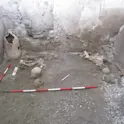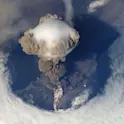Researching one of the most disruptive volcanoes to forecast future eruptions
Researchers turn to specific volcanoes such as Etna in Sicily to gain insight into volcanic and non-volcanic activities of the Earth. By Fiona Boni, Science Writer A professor at the University of Roma Tre, Valerio Acocella focuses his research on understanding what triggers eruptions and what causes the propagation of the magma to the earth’s surface. He has a special interest in advancing what we know about the structure and pre-eruptive behaviour of the most disruptive type of volcanoes, known as calderas. These are large volcanic depressions formed when a magma chamber is emptied by a volcanic eruption. “Knowledge and prevention are the essential ingredients to mitigate risks,” says Acocella. “Understanding how calderas work is important when forecasting volcanic activity, and also in forecasting large eruptions.” Using similar mechanisms that have been used in studying calderas, Acocella and his team are now also trying to understand and forecast eruptions in composite volcanoes, such as Etna, using a combination of tools. “Volcano Etna has had some interesting eruptions in the last decades. In close collaboration with colleague Marco Neri (INGV Catania), we have been researching how this volcano works along with other processes that are really aren’t strictly volcanic, such as the instability of the volcano flank,” he explains. Based on […]



